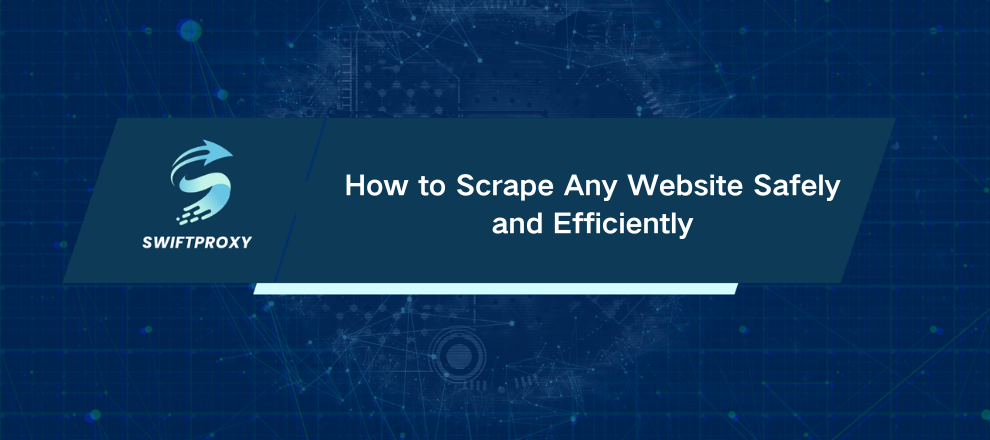How to Scrape Any Website Safely and Efficiently

Over 90% of web scrapers fail in their first week because they get blocked. This isn't fear-mongering—it's the reality. Scraping has evolved. Simple HTML parsing and regex are no longer enough. Today's websites are smarter, and you need to be smarter too. AI can now understand complex layouts, extract data from images, and even analyze trends automatically. One persistent challenge is IP bans, and encountering them can bring your scraping project to a standstill.
By combining AI with smart proxies, you can safely scrape any website. Here's a detailed look at how to do it, including a working Python example.
Why Scrapers Are Blocked by Websites
Websites are on high alert. They watch for patterns that don't look human. A few common triggers for an IP ban:
Sending hundreds of requests in seconds.
Hitting the same IP repeatedly.
Using IP ranges tied to datacenters.
The result? Temporary blocks. Permanent blocks. A halted project. And a lot of wasted time.
How Proxies Tackle the Problem
Think of proxies as masks for your scraper. They hide your real IP, shuffle your location, and make your traffic look human. Here's what works best:
Residential proxies: These are real IPs from ISPs. Harder to detect. Harder to block.
Mobile proxies: 4G and 5G IPs. Nearly impossible to blacklist because they're shared across carriers.
Rotating proxies: Automatically swap IPs with every request or interval, keeping detection patterns at bay.
The effect? Each request looks like a unique human visitor. No red flags. No blocks.
Utilizing AI for Smarter Scraping
Old-school scraping breaks when a website changes layout or hides data in images. AI scraping changes that. Tools like GPT Vision can:
Dynamically understand page layouts.
Extract text from images or screenshots.
Identify structured data without relying on fixed rules.
Combine AI with proxies, and suddenly you're scraping faster, smarter, and more reliably—almost like a human browsing the site.
Scraping a Product Page Without Getting Blocked
Let's walk through a concrete Python example. We'll use Requests, BeautifulSoup, and a residential proxy to extract product data safely.
1. Install Dependencies
pip install requests beautifulsoup4
2. Configure Your Proxy
Most sites block repeated requests from the same IP. Set up a residential proxy. Replace credentials with your own:
proxy_user = "USERNAME"
proxy_pass = "PASSWORD"
proxy_host = "PROXY_HOST"
proxy_port = "PROXY_PORT"
proxies = {
"http": f"http://{proxy_user}:{proxy_pass}@{proxy_host}:{proxy_port}",
"https": f"http://{proxy_user}:{proxy_pass}@{proxy_host}:{proxy_port}"
}
3. Send a Request Through the Proxy
import requests
from bs4 import BeautifulSoup
url = "https://books.toscrape.com/catalogue/a-light-in-the-attic_1000/index.html"
response = requests.get(url, proxies=proxies, timeout=30)
soup = BeautifulSoup(response.text, "html.parser")
4. Parse the HTML
title = soup.find("h1").text
price = soup.find("p", class_="price_color").text
5. Output the Result
print(f"Title: {title}")
print(f"Price: {price}")
Expected Output:
Title: A Light in the Attic
Price: £51.77
You've scraped a page without triggering blocks.
Practical Guidelines
Always respect robots.txt and local scraping laws.
Use rotating residential or mobile proxies for large-scale projects.
Randomize request intervals to mimic human browsing.
Combine AI parsing with HTML scraping for maximum coverage.
Monitor proxy usage to optimize costs.
Conclusion
Web scraping in 2025 isn't just about extracting data. It's about doing it smart, fast, and safely. AI makes scraping intelligent. Proxies make it unstoppable. Use them together, and you'll avoid blocks, maximize uptime, and keep your data pipeline flowing smoothly.

















































